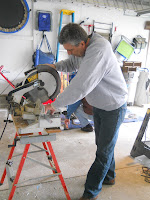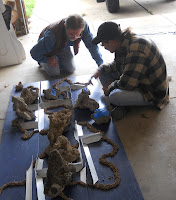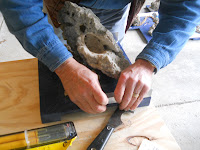The Akron Canton Bonsai Society invites all of our internet friends to view our fourth annual Virtual Fall Show over on our gallery site: http://picasaweb.google.com/akroncantonbonsai

by Michael Rusnak
Why a virtual show? It's mostly because of the timing. While our club typically exhibits trees during the growing season, in past years, many members have talked about the idea of having a fall show. Many species of bonsai, especially the maples and larches can be more fully appreciated if they are seen in their amazing fall colors. However, because the species come into their colors at different times, sometimes weeks apart, it would be difficult to find a date for an exhibit. Additionally, the window of time when the colors are at their height in only a few days long, so one species might be at its height, while others would have already emptied their leaves.
 |
| Crab apple with its fall fruit |
By bringing trees to eye level, bonsai alters the human perspective. In this way, bonsai helps change attitudes, and shows the world the incredible beauty, strength, staying power and other illustrious qualities of trees. It is a type of life that is so different from us, yet how it reacts, survives and perseveres is the kind of stuff that lends itself to so many proverbs, symbolism and legends across many cultures. This is but one reason why we love our bonsai, and present them here in photographs for others to enjoy.
Again we invite you to view our gallery:
http://picasaweb.google.com/akroncantonbonsai



















































